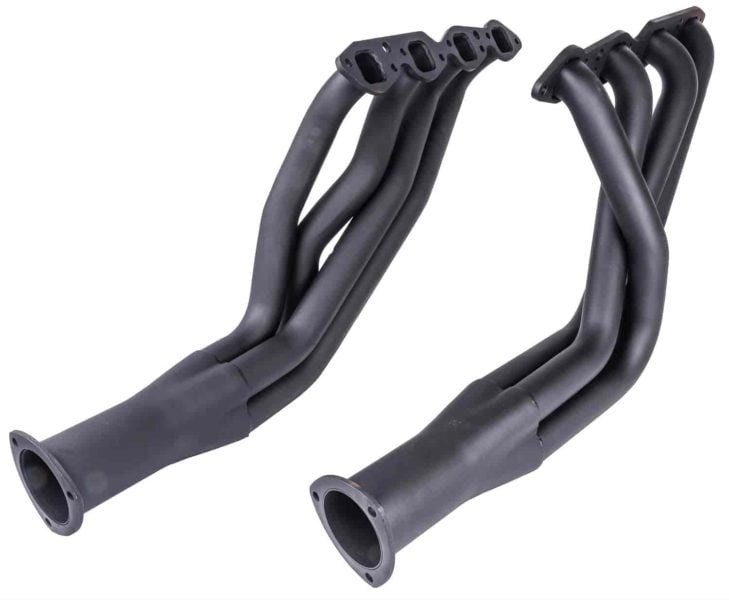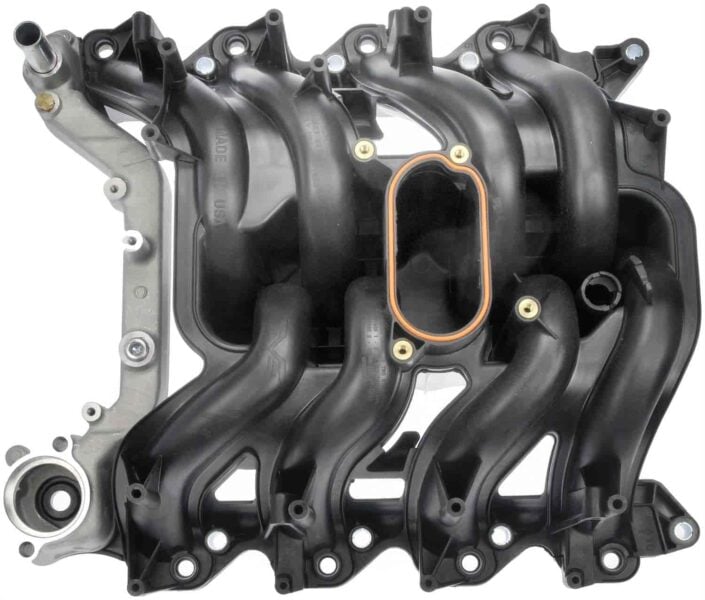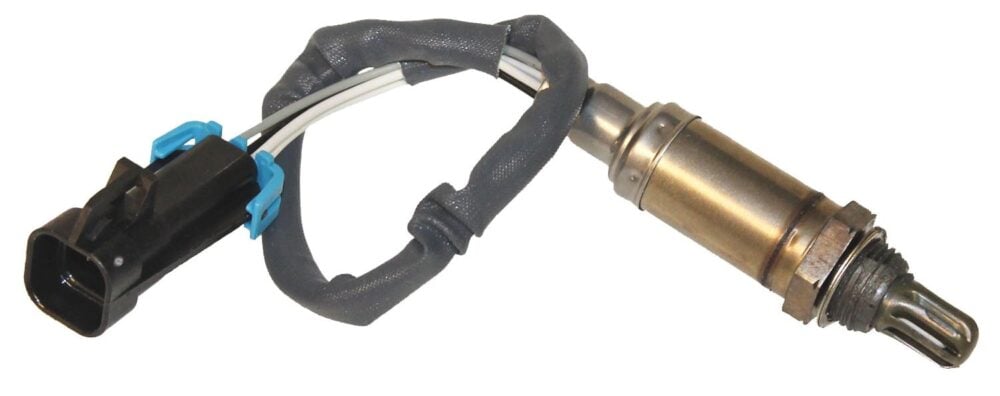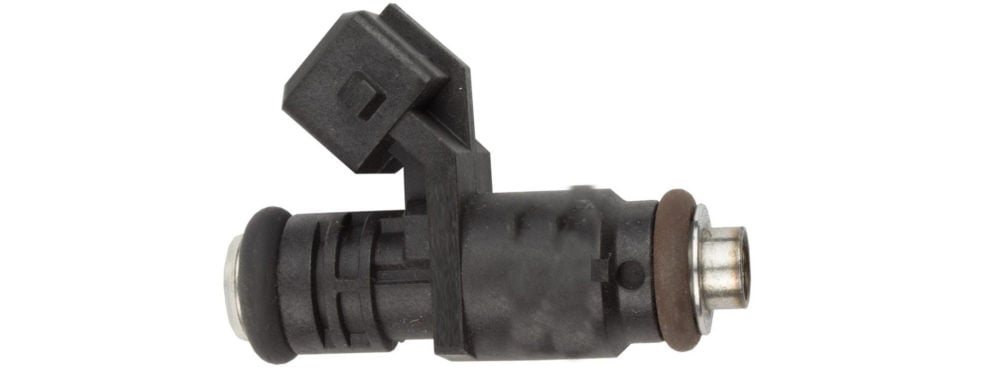
PCV stands for positive crankcase ventilation, and it's a system that is crucial for the proper functioning of most modern engines, whether diesel or gas. A PCV valve that does not function properly can lead to decreased performance and even engine damage. If you are wondering what does a PCV valve do, or how to tell if a PCV valve is bad, read along and find out all you need to know.
Comprehensive Details on the PCV System and Why We Use PCV Valves
The PCV system is responsible for leveling the pressure inside the engine. It does so by allowing the excess pressure that builds up in the crankcase during combustion to be vented into the intake manifold.
The PCV valve itself is a very simple component – a spring-loaded check valve in a plastic or metal casing. When enough pressure builds up in the crankcase, it generates a force that compresses the spring in the PCV system and allows the valve to open. Pressure can then escape from the crankcase. What‘s important with this system is that it allows air to move only in one direction.
One of the main reasons for the use of the PCV system is that without allowing the pressure to be vented from the crankcase, gaskets and seals would be exposed to excessive forces and start to fail over time. As a result, the engine could develop oil leaks. Furthermore, the positive crankcase ventilation system reduces emissions. This is because the gases that are released from the crankcase to the intake are then given another chance to burn during another combustion cycle. This also has the effect of slightly improving your fuel economy.
How to Determine If You Have a Bad PCV Valve
The easiest way how to tell if PCV valve is bad is to remove it from the engine and shake it. If you can hear it rattle, all should be fine. If not, it might signal that the valve is clogged with oil and carbon buildup, and it cannot open or close properly.
Bad PCV valve symptoms are various, from a Check Engine light to engine gasket leaks and decreased engine performance. To get into greater detail, when the valve malfunctions, it‘s most likely because it's permanently stuck either open or closed.
When the PCV valve is stuck closed, crankcase gases cannot be properly vented back into the intake manifold. This can lead to increased pressure within the crankcase, potentially causing oil leaks and damage to gaskets and seals. The buildup of crankcase pressure can also force oil out of gaskets and seals, leading to oil leaks. These leaks can be detrimental to engine components and can also cause environmental concerns. The PCV system helps remove moisture, unburned fuel, and other contaminants from the engine oil. When the valve is stuck closed, these contaminants cannot be evacuated, reducing the oil's effectiveness, and potentially causing engine damage. A closed PCV valve can also prevent crankcase gases from being recirculated back into the intake manifold. This can lead to the release of these gases, which include unburned hydrocarbons, into the atmosphere, increasing your vehicle's emissions output. The inability to remove moisture and contaminants from the engine oil due to a closed PCV valve can lead to sludge buildup within the engine. This sludge can clog oil passages and cause engine wear, ultimately reducing engine life and performance.
On the other hand, a stuck-open PCV valve can cause excessive oil to be drawn into the intake manifold. This can lead to increased oil consumption and the need for more frequent oil changes. An open PCV valve can also create a vacuum leak, which may cause the engine to idle poorly, rough, or even stall. The PCV valve is designed to help control emissions by recirculating crankcase gases back into the intake manifold. When the valve is stuck open, these gases can be released directly into the atmosphere, increasing your vehicle's emissions output. The PCV system also helps remove moisture and other contaminants from the engine oil. A stuck-open valve can cause these contaminants to build up, reducing the oil's effectiveness and potentially causing engine damage. Finally, a stuck-open PCV valve can affect the air-fuel mixture in the engine, which can lead to reduced engine performance, poor acceleration, and decreased fuel efficiency.
It‘s important to note that in some cases, these signs may not be related to the PCV system. An engine is a set of complex systems, and different malfunctions can often have the same symptoms.
How You Can Effectively Maintain Your PCV Valve System
Most manufacturers recommend a service of the PCV valve system every 20,000 to 50,000 miles but it‘s still advisable to check its function from time to time and perform basic maintenance on top of this interval. This will ensure the long-term reliability of the PCV valve, and your engine in general.
Repairing or maintaining the valve is an easy thing to do even for a beginner car DIYer and takes just about half an hour. To effectively maintain the PCV valve, remove it from the engine and clean it of any deposits using a suitable cleaner or solvent.
To do so, you must first locate the valve, which is usually found near the intake manifold or valve cover. Depending on the vehicle, it will likely be connected to a hose using a clamp or threaded. Simply loosen it, and you should be able to remove the PCV valve from the engine itself. It is worth inspecting the condition of the hose that is connected to the valve as well – if it‘s cracked or deformed, it should be replaced. At this point, you can decide to either clean the old PCV valve or replace it with a new one. A replacement is typically inexpensive to buy, so it might be the easier thing to do.
If you choose to maintain the old valve, be aware that depending on the make and model of your vehicle, it may vary in its material. While metal valves can be cleaned using virtually any cleaner, such as a brake cleaner or throttle body cleaner, plastic valves are more sensitive to the type of cleaner used. This is because most cleaners contain acetone, to which plastic has only limited resistance. Use water-based cleaners for plastic valves.
After you have selected a suitable cleaner, simply soak the valve in it for 10 to 20 minutes, and then thoroughly rinse it with water. At this point, if you try to shake the valve, you should be able to hear slight rattling. This means that the valve is not stuck in place and should operate normally. Make sure to let the PCV valve dry completely before installing it back in the engine. The spring inside the valve is usually very thin and might break easily if it starts to rust.
Whether you are looking for an effective cleaner, a PCV valve replacement, or any other component for your vehicle, head to JEGS, your high-performance aftermarket auto parts supplier with a wide product selection and a price match guarantee.





